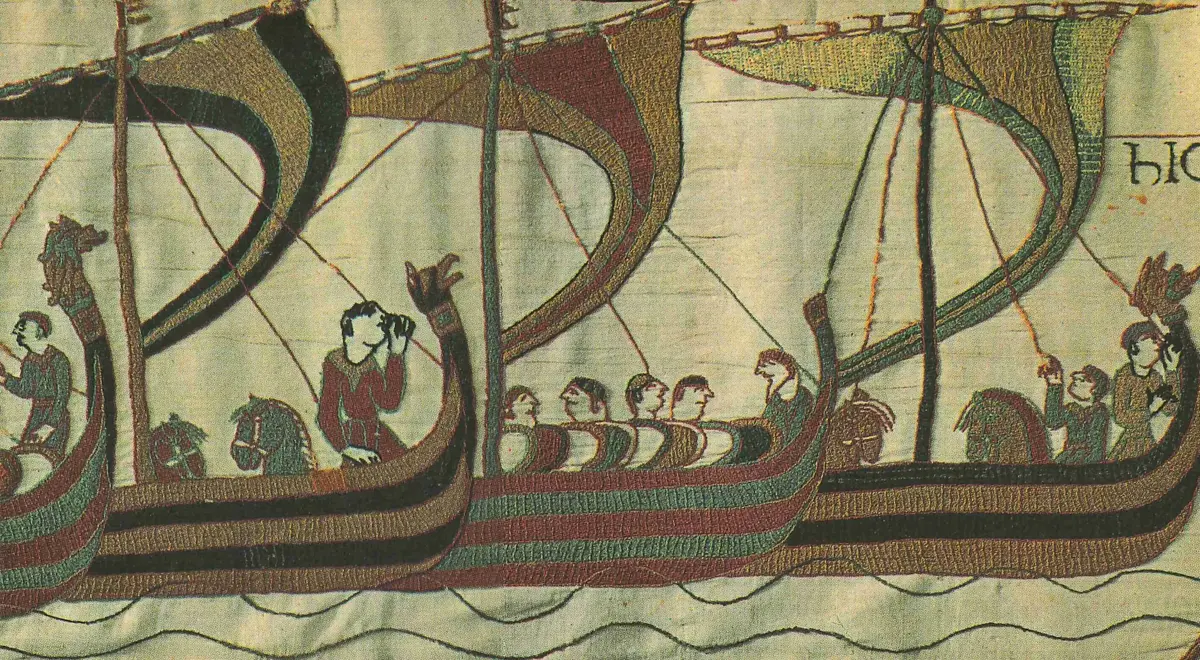It is hard to imagine Viking Age seafaring without the clinker-built longships with their large and efficient wool sails. Sails were likely introduced into Nordic shipbuilding in the 8th century and marked a significant technological advancement, making it possible to build broader ships such as the Oseberg and Gokstad ships.
A longship required a sail of around 120 m², while a trading vessel needed about 45 m². The Oseberg ship’s sail measured approximately 80 m², and the Gokstad ship’s sail around 130 m². For the largest Viking fleets—such as the fleet of Cnut the Great in the early 11th century—up to 1 million m² of sailcloth would have been needed in total. Considering it took about 3.5 person-years to produce a single 150 m² sail, we can understand that the sail was as valuable as the ship itself during the Viking Age.
In the exhibition, you can see an original mastfish, a structural element in Viking ships essential for supporting the mast and sail—made from thick, reinforced timber. We also display 1,000-year-old textile tools such as wool combs, drop spindles, and weaving swords—typical tools used in sail production during the Viking Age.
